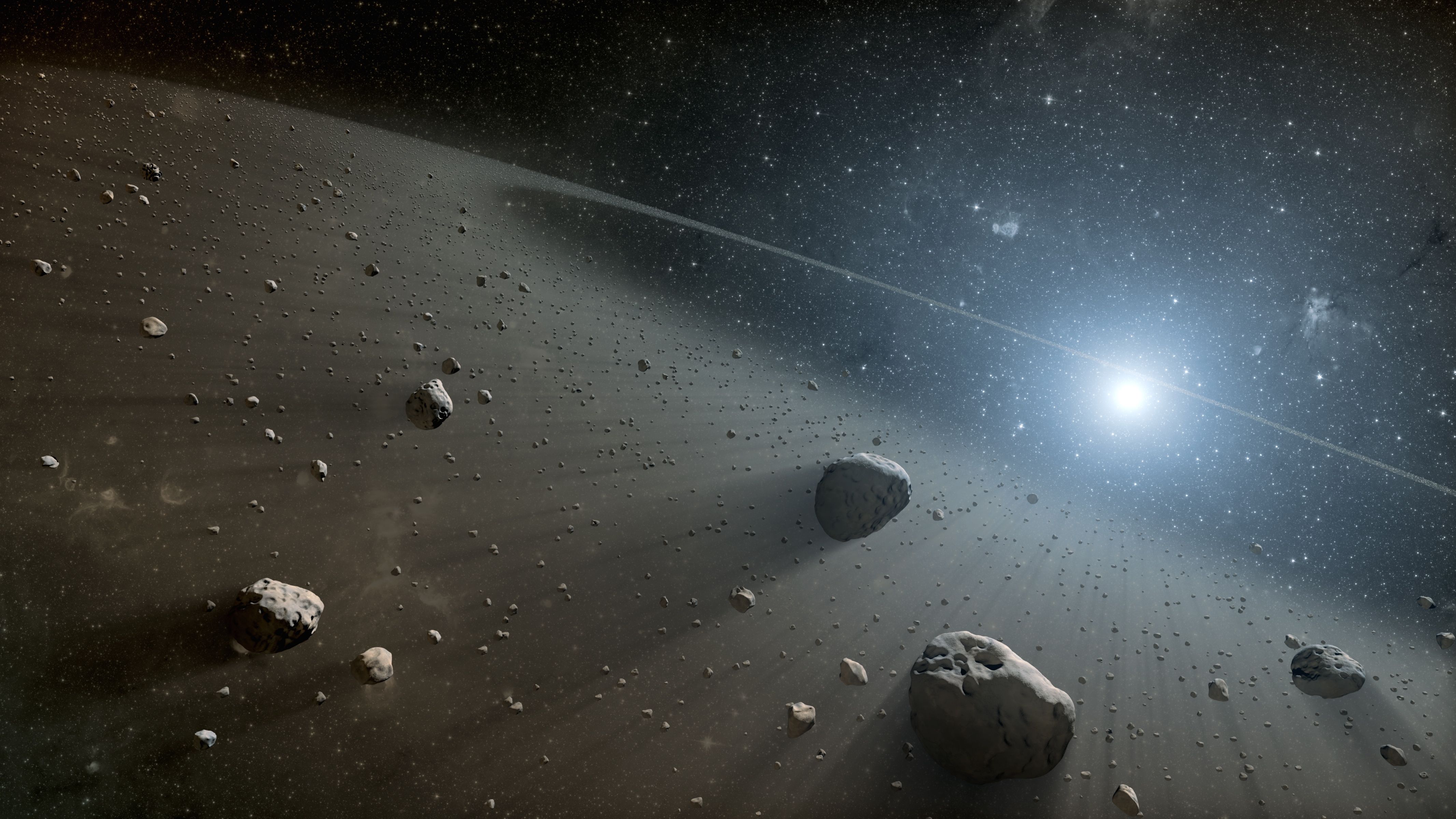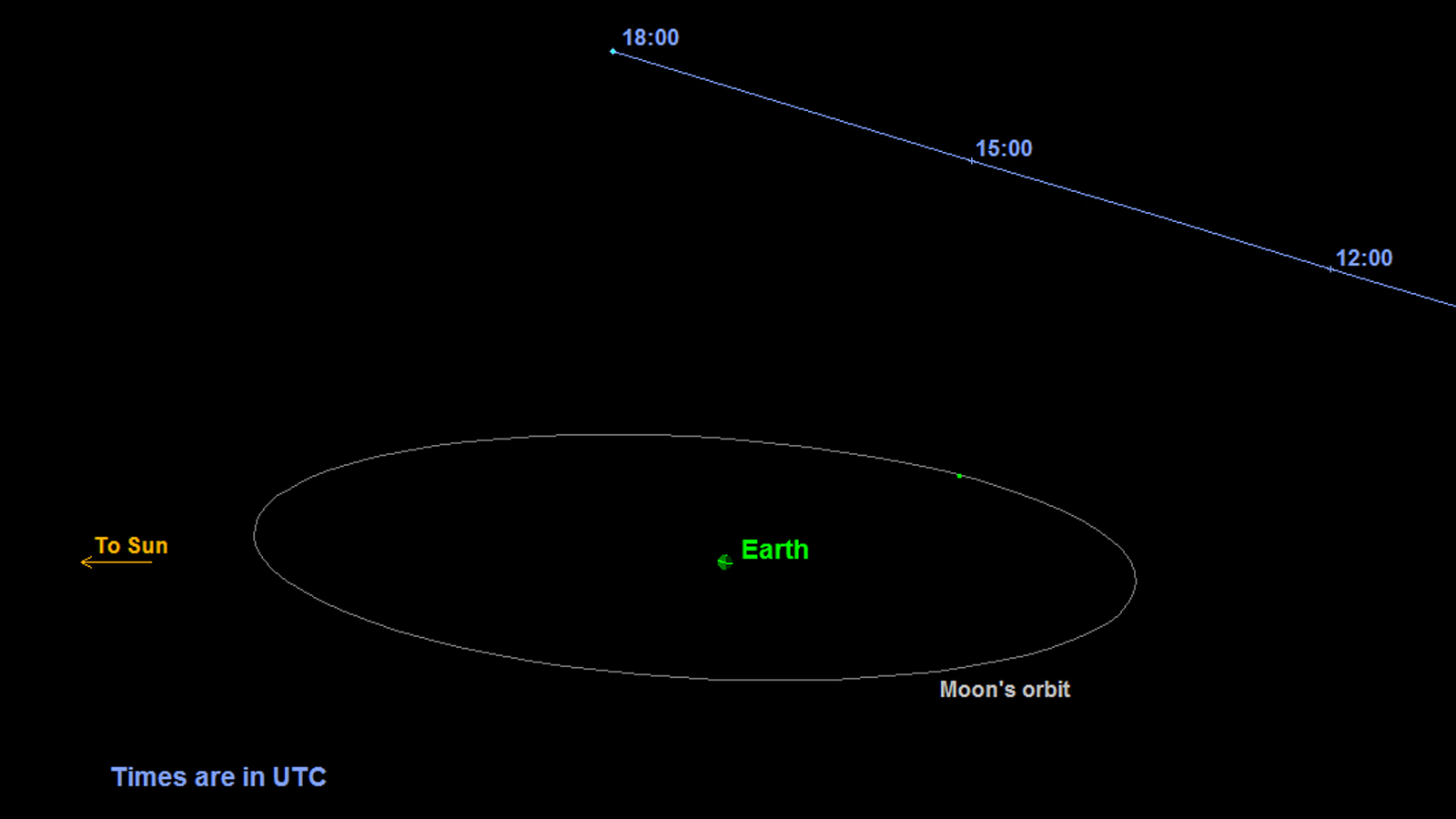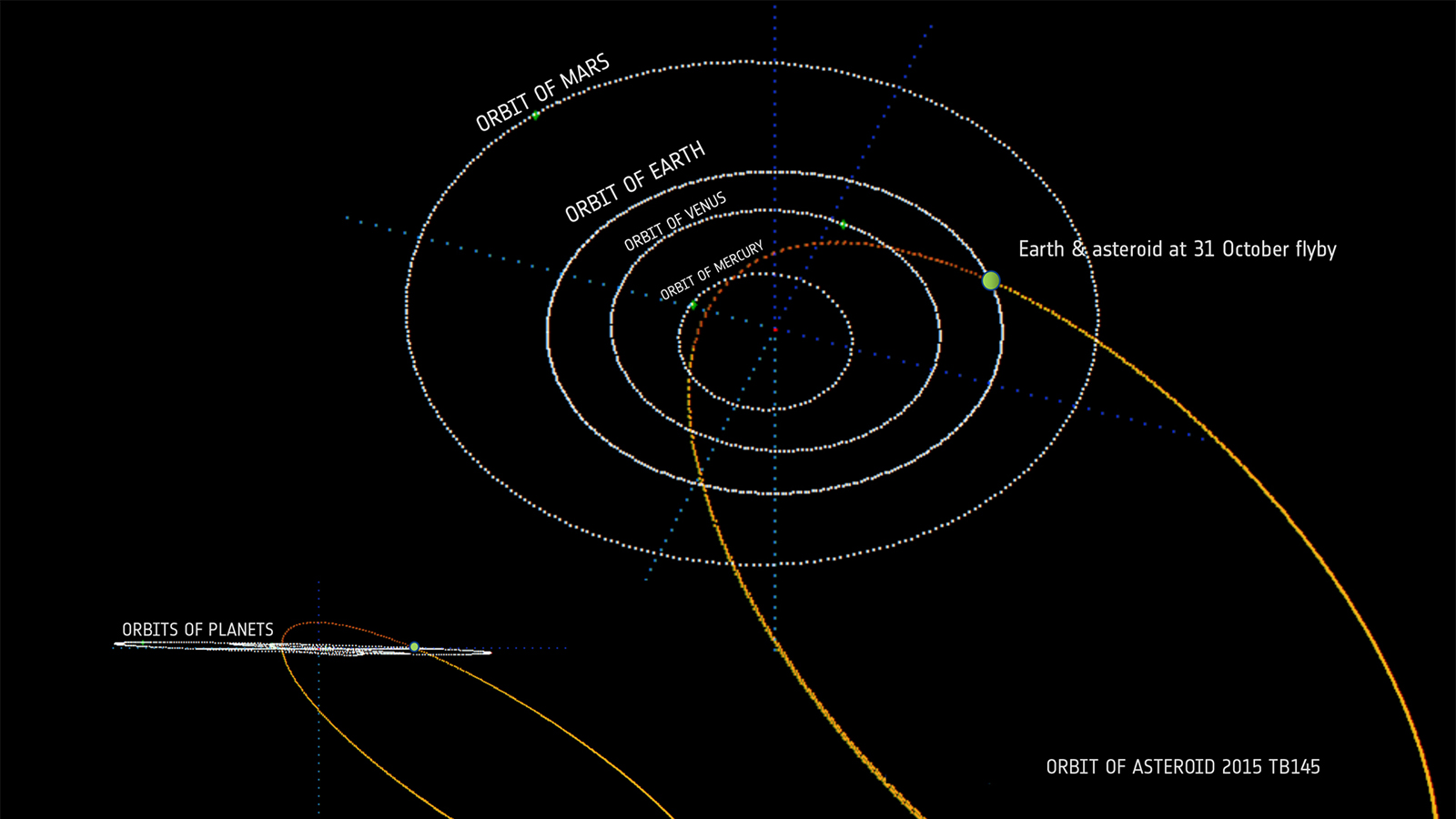Halloween asteroid: every detail on today's 'Spooky' close encounter
No, it's not going to kill us

Halloween scares are usually of the localized, personal variety - stuff like ghosts and unsavory characters hiding in our closets with lawn care equipment.
But this Halloween is bringing a scare of a very different sort, one that could affect us all. Somewhere out there in the black beyond is an asteroid named 2015 TB145 that's set to zoom by our planet at 10:05am Pacific time on October 31.
It's moving at a stunning 22 miles (35km) per second, and were it pushed off its current course by even a smidge, it's possible our candy hauls would be the last things on our mind come Sunday morning. But thankfully there's no need for doom and gloom in this case. In fact, its appearance is a bit of a rare treat for astronomers.
How big is it and how close will it come to Earth?
We're in no danger at all, as it turns out, but it'll come close. 2015 TB145 (or "Spooky," as it's being called informally in some circles) will approach our planet within 302,000 miles (487,000km), which is only 1.3 times the distance from the Earth to the moon. And it's kind of big, too, as current estimates peg it at 1,300 feet (400 meters) across. On the bright side, it's still far enough away that the European Space Agency doesn't even see cause to include it on its Risk List for near-Earth objects.

The asteroid was only discovered by the Panoramic Survey Telescope & Rapid Response System (Pan-STARRS) on October 10 atop Hawaii's Mount Haleakala, but that's been more than enough time for scientists to calculate the specifics of its orbit. In fact, we even know that it has a highly elliptical and tilted orbit that's curiously more common to comets than asteroids (though it lacks any of the classic signs of comets, such as tails), and that it's either a "dead" comet or an asteroid with an orbit that was severely altered by the gravitational pull of Jupiter at some point.
Its highly skewed orbit, in fact, is thought to be one reason why it remained undetected for so long, as only telescopes in the remote spots of the Southern Hemisphere would be able to spot it on most of its journey. Data also suggest that it likely last made a close flyby in 1975, well before many of today's advanced monitoring systems were developed.
What would it do if it hit us?
For perspective, the asteroid responsible for creating Arizona's 560-foot deep and .737-mile wide Meteor Crater is thought to have only measured around 130 feet and was traveling at a comparatively modest 7.5 miles (12km) per second.
Get daily insight, inspiration and deals in your inbox
Sign up for breaking news, reviews, opinion, top tech deals, and more.
That was also the presumed size of the meteor thought responsible for the "Tunguska Event," which leveled approximately 800 square miles (2,070 square kilometers) of remote Siberian forest back in 1908. (The asteroid or comet that killed the dinosaurs is usually thought to have been around six miles (10km) in diameter.) That such a large object as 2015 TB145 went so long without being detected has some scientists on edge.

"The fact that such a large near-Earth object, capable of doing significant damage if it were to strike our planet, was discovered only 21 days before closest approach demonstrates the necessity for keeping daily watch of the night sky," said Detlef Koschny of the ESA's Space Situational Awareness office in a statement.
Daniel Brown, a lecturer in astronomy at Nottingham Trent University, published a scenario at The Conversation on Tuesday detailing what that would mean for us if 2015 TB145 hit this weekend. His observations were based on observations of 2013's Chelyabinsk meteor event (which injured 1,491 people) and impact simulators from Imperial College London, and it's not a pretty picture. Many people would likely die, and economies would be devastated. Brown imagines a scenario in which a Pacific impact unleashes a "tsunami wave between five and 15 metres in height" that would cause misery for huge swaths of coastal Australia and other Pacific countries. It wouldn't be the end of civilization by a long shot, but it would leave scars the affected areas wouldn't easily recover from.
Why are astronomers excited?
But since there's no need to worry about all that, scientists are eager to get down to the dirty business of studying the Spooky asteroid. Such a close flyby means that this is an extraordinary opportunity to study such an object in detail without going through the trouble of landing a craft on it, as the ESA did with its Rosetta space probe on comet 67P/Churyumov–Gerasimenko last year.
As a result, NASA is already prepared to monitor the asteroid on October 31 with its radar telescopes at California's Goldstone Deep Space Communications Complex. According to Marina Brozovic of NASA's Jet Propulsion Laboratory in Pasadena, California, the Goldstone complex will transmit the radar signals to the asteroid while Puerto Rico's Arecibo Observatory and West Virginia's Green Bank Observatory will receive the signals, resulting in "really spectacular" images that we'll hopefully see a few days down the line.
But what about us normal people? Can we see it?
The sun will be too bright in North America for the closest flyby, and even if it weren't, Paul Chodas, manager of the Center for Near Earth Object Studies at NASA's Jet Propulsion Laboratory notes that "it is expected to be fairly faint, so night-sky Earth observers would need at least a small telescope to view it."
If you do have a telescope, though, you can find it at around 12:20am Pacific (3:20am Eastern) Saturday by setting your sights on HIP 23301, a magnitude 8 star located in the constellation Orion. Nearby, 2015 TB145 will look like a slowly moving "star."
Don't want to bother with all that? Never fear: you can treat yourself to the free feed hosted by the Slooh Community Observatory beginning at 9:30am Pacific on Halloween.
Top image credit: NASA/JPL-Caltech